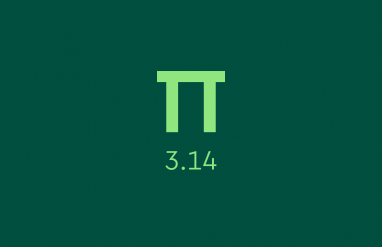You’re in an arbitrary fight with your best friend over a misunderstanding, you got a flat tire on the way to work, and an important document you needed got lost in the mail, never arriving at its intended destination. You might chalk this series of unfortunate events up to luck (or rather, lack thereof), but some may take it a step further and blame it on the fact that Mercury is, yet again, in retrograde.
One of astrology’s most nerve-racking events, Mercury retrograde is actually an optical illusion that occurs for about three weeks approximately three to four times a year. During this time, the planet Mercury appears to be moving backwards (or in retrograde) when viewed from Earth. But what causes this, and why does it always send your astrology-loving friends into such a tizzy?
First, let’s cover the basics.
Facts on planet Mercury
Approximately the size of Earth’s moon, Mercury is the closest planet to the sun and the smallest planet in our solar system. Due to its close proximity to the sun, Mercury has a shorter orbital path than Earth does (88 days vs. 365 days), which is likely why the planet was named after the quick, swift-footed Roman god Mercurius, or Hermes in Greek mythology. Often depicted with wings on his shoes and helmet, Hermes served as the essential messenger for all of the other gods, ruling over commerce, wealth, thievery, eloquence, science, and good fortune.
Because it’s always been so clearly visible in the night sky, it’s hard to say exactly when Mercury was first discovered, but the planet was first observed through telescopes by astronomers Galileo Galilei and Thomas Harriot in 1631.
What does it mean when a planet is in retrograde?
By definition, retrograde means to “move backward, have a backward motion or direction, retire, or retreat.” First coined in the 1300s, the word retrograde was originally used to describe the perceived motions of the planets and is derived from the Latin prefix retro, or “backward.”
While it may seem like astrologers talk the most about Mercury moonwalking its way around the sun, it turns out that all of the planets take turns moving in retrograde at some point or another—or at least that’s how they appear from our position on Earth. Because Mercury, in particular, orbits the sun about four times as fast as the Earth does, there are a few periods per year where the speedy planet briefly moves east to west in the sky, rather than west to east. It’s essentially lapping us on its way around the sun, causing an optical illusion in the meantime.
Think of it this way: if you’re driving a car on the highway and another car passed you, you’d easily be able to recognize that that car was simply moving faster than you. On the other hand, if you’re in the car doing the passing, a quick shift in perspective might make the slower car appear to be moving backwards relative to your own motion, even though we know that’s not actually the case. (If you’re still having trouble visualizing it, this video serves as a pretty good explanation.)
Interestingly enough, the seemingly abnormal Mercury retrograde period in particular was first noted in British agricultural almanacs in the 1700s. Farmers used these almanacs to try to strategically sync their planting and growing schedules to the optimal cycles of the stars.
What does Mercury retrograde mean in the context of astrology?
So why do so many people dread periods of Mercury retrograde, and how does this illusion of Mercury moving backwards in the sky have any impact on our daily lives?
In astrology, retrograde motion from any planet tends to have negative connotations. Astrologers believe that a planet’s perceived backwards motion can lead to increased interruptions in the things the planet rules, and because Mercury rules all forms of communication, information, transportation, and even technology, Mercury’s periods of retrograde are always especially hectic.
According to astrologers, you may experience more miscommunications and disagreements in your personal relationships during Mercury retrograde, which could only be heightened by technological mishaps, car troubles, and hiccups in travel plans along the way.
WATCH: How Well Do You Know The Signs Of The Zodiac?
Dates for Mercury in retrograde
If you’re curious, here are the dates (according to US Eastern Time) for the Mercury retrograde in 2022:
- January 13 – February 3
- May 10 – June 2
- September 9 – October 1
- December 28, 2022 – January 18, 2023
There’s technically no scientific evidence to back up astrologers’ claims surrounding Mercury retrograde, but for believers and non-believers alike, surviving Mercury retrograde is fairly simple: choose your words carefully, triple-check that your data is backed up somewhere, and plan for mishaps with cars, trucks, and travel in general.
And if all else fails, just blame Mercury.
Mercury also rules over two signs, Gemini and Virgo, because of its association with duality. What does that even mean? Read more about Gemini and Virgo to find out! Then test your cosmic spelling energy with this quiz on astrology lingo.














